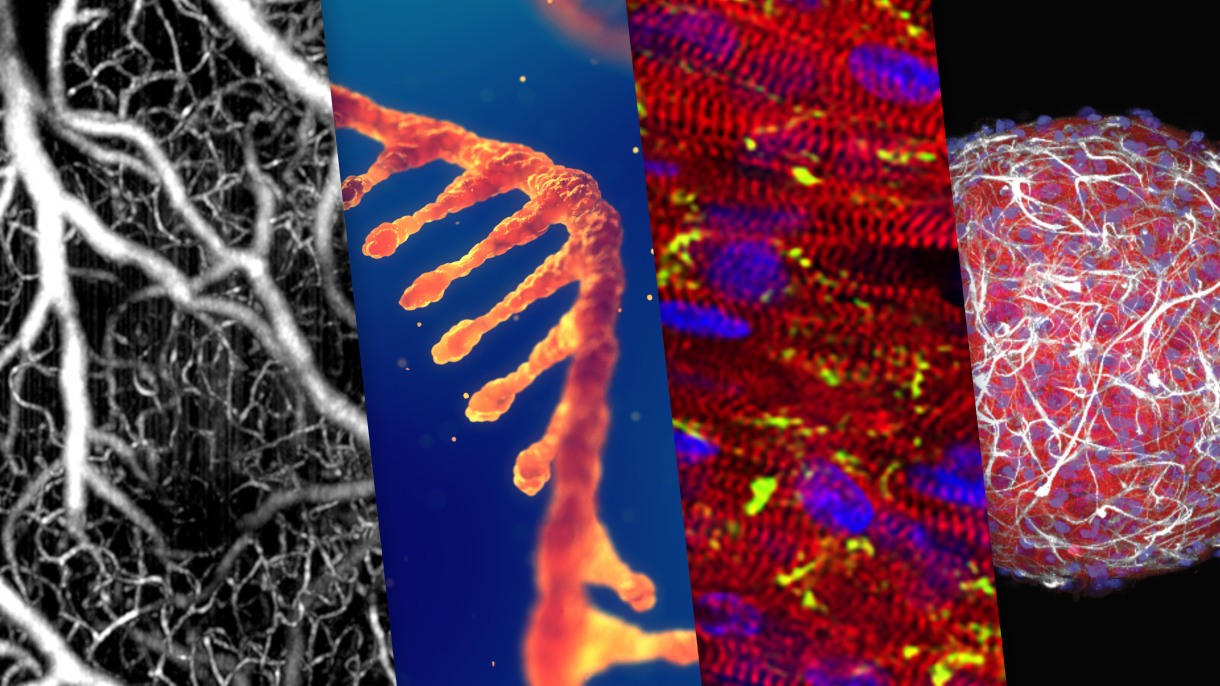
Driven by the immense societal need for more effective and equitable health care, the new Institute for Biology, Engineering and Medicine at Brown University is serving as an incubator for collaborative research and innovation that can be translated into health and medical solutions.
In part, the institute’s establishment was inspired by COVID-19, its leaders say — in particular, the ways in which the pandemic illuminated both individual and population-level vulnerabilities to illness that could be best addressed through the powerful combination of experimentation, computation and clinical research.
With key approvals from the Brown’s faculty and governing board secured in 2022-23 — and a year of strategic planning, development and organization now complete — I-BEAM is positioned for its wider launch in the 2023-24 academic year. The institute’s mission is to bring together faculty and students from the life sciences and engineering with clinical partners to conduct research, create and test ideas, and translate cutting-edge science into diagnostics, therapies, devices and treatments for patients.
Complex modern health challenges span areas of expertise, said Brown University Provost Frank Doyle.
“In my own biosystems control research, I have seen the power of combining machine learning and A.I. models with experimental data from sophisticated sensors of biological and physiological functions,” said Doyle, a professor of engineering and elected member of the National Academy of Medicine, National Academy of Inventors and the National Academy of Engineering. “This institute takes great advantage of Brown's existing strengths and puts us at the forefront of not just engineering research, but biology and medicine as well.”
I-BEAM will bring together researchers from Brown’s Division of Biology and Medicine, School of Engineering, Department of Chemistry, Division of Applied Mathematics, Department of Computer Science and Carney Institute for Brain Science, among other academic units. The mission of I-BEAM extends to questions focused on health equity and social impact that will also engage colleagues from the School of Public Health and Brown’s humanities and social sciences departments.
Vicki Colvin, a Brown professor of chemistry and engineering, serves as the founding director of I-BEAM, reporting to an executive committee that includes Brown’s provost, dean of medicine and biomedical sciences, and dean of engineering, reflecting broad campus engagement and impact.
While I-BEAM programs and activities are being fine-tuned with input from core faculty and internal advisors, Colvin said that signature one-day workshops will be designed to convene faculty and students from different fields of study with industry and government partners to engage around challenges in health and medicine, sometimes with the goal of submitting proposals for research funding. Seed funding is another way I-BEAM will work to build research teams and augment existing expertise around key projects, she noted.
"Ultimately, I-BEAM faculty are committed to translation and want to move research from the labs to the clinic as fast as possible."
Vicki L. Colvin, Founding Director of I-BEAM, Vernon K. Krieble Professor of Chemistry, Professor of Engineering
As one way to increase the long-term impact of research emerging from the institute, I-BEAM leaders are collaborating with colleagues from Columbia University, Johns Hopkins University and Yale University — backed by a $3.3 million grant from the National Science Foundation — to design and implement strategies to increase the number of faculty from groups historically underrepresented in science, technology, engineering and mathematics, with a specific focus on biomedical engineering.
I-BEAM will also help Brown students develop skills through classes that bridge biology and engineering as well as applied or translational research experiences. Eventually, Colvin said, I-BEAM leaders expect to offer certificate programs for graduate students to build skills and knowledge that span the diverse disciplines needed to make progress on critical challenges at the nexus of biology, engineering and medicine.
Bringing biomedical ideas to life
Two examples of existing Brown research projects that will benefit from the new I-BEAM structure include clinical implementation of “digital twin” technology and RNA therapeutics.
George Karniadakis, a professor of applied mathematics and engineering, is a pioneering scholar in the area of digital twins. Karniadakis takes machine learning and artificial intelligence capabilities and applies them to biological data sets to develop extremely detailed computer models, or “digital twins” of biological processes. For example, he can create computer models of blood vessels that include information about their elasticity and use those to predict what will make blood vessels burst.
Karniadakis’ work on computational models predictive of human health is integral to developing real solutions, said School of Engineering Dean Tejal Desai, a member of the I-BEAM leadership committee.
The Karniadakis research team’s platforms have a multitude of applications, including for ophthalmology and treatment of metabolic disorders. Desai explained that biologists can perform research to help create accurate inputs for the models, and if a researcher with clinical expertise is added to the team, they can then study how the models can be used in hospital settings or to help address disease progression in patients.
“Putting scientific discoveries in the context of these different disciplines will amplify each group’s work and will take the research further and make it more useful and meaningful to clinicians and patients,” Desai said. “I-BEAM is where this next-level work can happen.”
Research grounded in ribonucleic acid (RNA) biology has been rapidly advancing at Brown under the leadership of Dr. Mukesh K. Jain, Brown’s senior vice president for health affairs, dean of medicine and biological sciences and a member of the I-BEAM executive committee.
RNA-based drugs can target almost any genetic component within a cell, even those on which other drugs (such as antibodies or small molecules) have been ineffective, and they are extremely fast and cost-effective to develop. There is massive interest in RNA drug development, Jain noted, from scientists, clinicians and the biopharmaceutical industry.
This story was originally published by Brown University on October 2, 2023